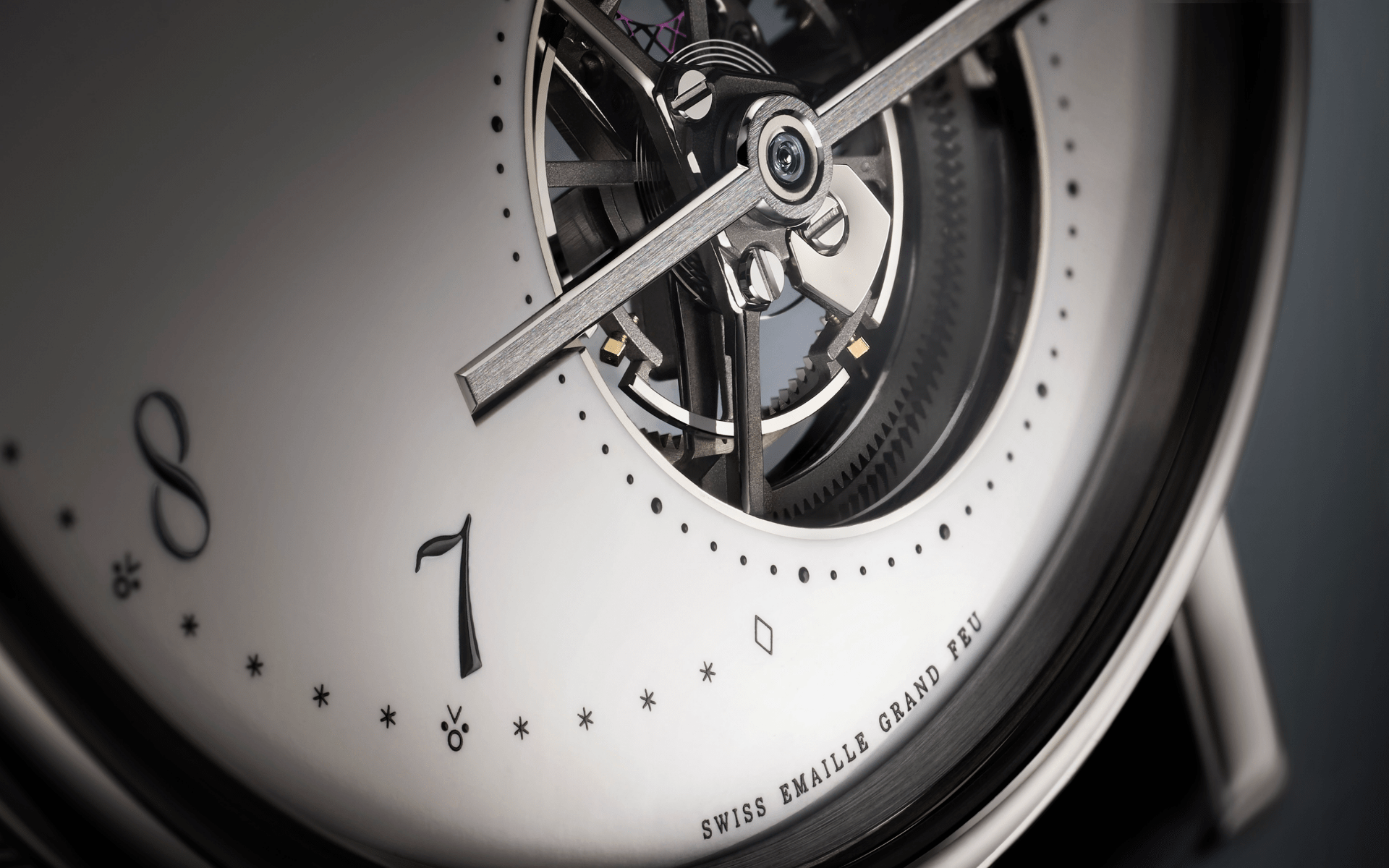The tourbillon was created to correct gravitational effects
During the course of his work, Breguet observed that gravity caused disruptions to the movement with each change of position (from vertical to horizontal and so on and so forth) of a watch.
To counteract this, he placed the entire escapement (comprising the balance spring and the balance wheel) in a rotating cage that performs one rotation per minute. And the tourbillon, which means “whirlwind” in French, was born.
Think of the cage as a second balance wheel, and one that rotates constantly as opposed to the stationary escapement. This constant movement cancels out any deviations caused by gravity, leading to better time-keeping accuracy.



